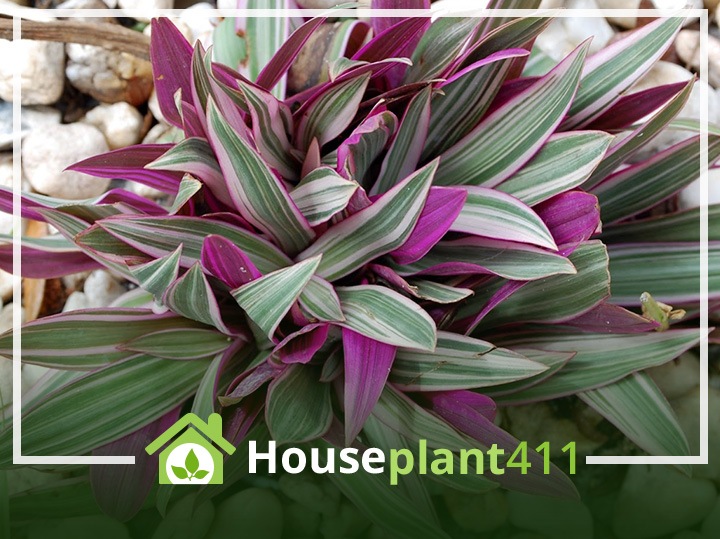A native of Central and South America, Moses-in-the-cradle is a kind of indoor plant. Its unusual growth pattern, which resembles a baby in a cradle, gave rise to its unusual moniker. Because of its eye-catching look and straightforward upkeep, this plant has been widely cultivated worldwide. Let’s look at the history and origins of Moses-in-the-Cradle in this article.
The History and Origins of Moses-in-the-Cradle
The family Commelinaceae, which has more than 650 species of herbaceous plants, includes the plant known as Moses-in-the-cradle. The Moses-in-the-cradle plant is a member of the Rhoeo genus indigenous to Central and South America. The plant thrives on damp soil and is frequently found growing in marshes.
The plant’s name is derived from the biblical character Moses, who fled persecution by floating down the Nile in a basket. Because of the plant’s unusual development pattern, which involves new shoots developing in the middle of older leaves, giving the impression that it is a baby in a cradle, this name was chosen.
In the early 19th century, specimens of the Moses-in-the-cradle plant were originally brought to Europe by explorers returning from the Americas. The plant quickly gained popularity among garden enthusiasts because of its low care needs and eye-catching beauty.
Cultivation and Distribution of Moses-in-the-Cradle
Due to its gorgeous leaves and simplicity of care, the Moses-in-the-Cradle plant is a preferred option for gardeners and landscapers. The plant can thrive in a range of soil types and can withstand both drought and flooding. Gardeners wishing to add to their plant collections frequently choose it since it is very simple to reproduce.
The plant enjoys soil that drains well and needs just light watering. It is a flexible plant that may be cultivated inside or outdoors since it can endure various lighting situations, from full sun to partial shade.
The Moses-in-the-Cradle plant has undergone breeding and hybridization studies. New cultivars with distinct color patterns and leaf textures have been created from these projects. The “Pink Stripe” and “Vittata” cultivars, having leaves with pink and white stripes, are two of the most well-liked.
Medicinal Properties of Moses-in-the-Cradle
Traditional medicine has also utilized the Moses-in-the-cradle plant to treat various diseases. Tannins, flavonoids, and saponins, among other bioactive substances found in the leaves, have been demonstrated to have antibacterial, antioxidant, and anti-inflammatory activities.
However, the plant’s therapeutic benefits should not be utilized as a substitute for expert medical advice or treatment because they have not been well explored. Moreover, many reports indicate the plant is toxic for humans and animals, especially due to the plant’s sap.
Cultural Significance of Moses-in-the-Cradle
Indigenous Peoples
Indigenous groups in Central and South America have utilized the Moses-in-the-cradle plant for various things, including herbal medicine, food, and fiber. While the leaves and roots are used in traditional medicine to cure various diseases, the plant’s fiber is frequently utilized to manufacture baskets and textiles.
Folklore
The Moses-in-the-cradle plant has been referenced in mythology and folklore in addition to its useful functions. For instance, the plant may be utilized to fend off bad spirits in some cultures where it is thought to have protective properties.
The Moses-in-the-Cradle plant is connected with rebirth and renewal and its protective meaning. This association is partly explained by the plant’s capacity to grow from cuttings and its resistance to environmental stresses. The plant is a metaphor for several civilizations’ fresh beginnings and life cycles.
The Popularity of the Moses-in-the-Cradle Plant as an Ornamental Plant
The Moses-in-the-Cradle plant is a well-liked cultivation for indoor and outdoor gardens. The plant is frequently planted in hanging baskets or pots, whose eye-catching leaves offer a splash of color and texture to any environment. The plant’s beauty also blesses the outside spaces in borders, rock gardens, and other landscaping tasks.
The plant’s adaptability is one factor in its appeal as an ornamental. In addition to full sun and moderate shade, the Moses-in-the-Cradle plant may also be planted in full shade. It is a fantastic option for gardeners in various regions because it is tolerant to drought and rainy conditions.
Environmental Benefits of Moses-in-the-Cradle
The Moses-in-the-cradle plant is attractive, but it also has environmental advantages. The plant enhances indoor air quality as a natural filter for airborne pollutants. Hence, places with low-quality airflow can use these plants as natural purifiers.
Challenges and Threats of Moses-in-the-Cradle
Invasive Species
Several regions, including Florida and Hawaii, classify the Moses-in-the-cradle plant as invasive. In some regions, it has been known for the plant to escape cultivation and outcompete local species, causing ecological harm.
Illegal Trade
As the plant is frequently gathered from the wild for use in decorative gardens, the illegal trafficking of Moses-in-the-cradle plants is a problem in some regions. The native populations may be harmed as a result of overharvesting.
Wrapping Up!
In conclusion, the Moses-in-the-cradle plant has a long history and significant cultural importance in its native Central and South America. While it has practical applications in traditional medicine and the manufacture of fiber, the plant is mostly cultivated as a decorative plant nowadays.
Although the plant is good for the ecosystem, it also risks becoming an invasive species and is vulnerable because of illegal trading. Ultimately, people worldwide continue to be fascinated by the Moses-in-the-cradle plant because it is so interesting and useful.

